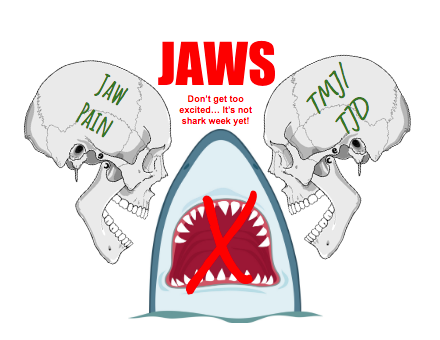Is “jaw pain” or TMJ causing you to have symptoms that make chewing difficult? Do you feel like your jaw is clicking and/or locking? OR ALL THE ABOVE?!
“Jaw pain” and TMJ related issues have spiked in 2020! The TOPS Physical Therapy Team has seen a large increase in people seeking help for pain related to “jaw pain”/TMJ. With the increase in patients suffering from this, TOPS has provided education on TMJ pain and how to manage the pain and symptoms!
Why has 2020 increased “Jaw Pain”/ TMJ?
Based on the reports we have received from our patients battling “jaw pain”, many individuals have been forced to change up daily routines and as a result people have more stressors weighing on them. We have heard from many patients that they have had an increase in stress at home given the current events that have transpired since January 2020. The most common increases in stress were: trying to manage their kids, adjusting to online learning, working full-time from home, and/or poor posture (some cases related to the new non-ergonomic home offices). With the increase in stress, patients have started clinching and/or developed neck tightness that results in TMJ issues. You’re not ALONE!
What does jaw pain really mean?
The temporomandibular joint (TMJ) is made of bones, nerve, ligaments, discs, tendons and muscles. Similar to other joints in the body, if there is a dysfunction, physical therapy can help with this by:
- Decreasing pain & inflammation
- Improving range of motion & strength
- Restoring function and helping you get back to your daily activities
Temporomandibular disorder (TMD) is an umbrella term used to describe several conditions that involve dysfunction of the jaw (“jaw pain”). The most common symptoms of TMDs are pain and decreased mobility to the jaw. There are numerous non-invasive/conservative (non-surgical) treatment approaches for TMDs that we can perform at TOPS Physical Therapy, including, but is not limited to: manual work, stretching, posture correction, and/or dry needling.

Tension in the TMJ can be largely related to tightness of the lateral pterygoid muscle (Look in the picture below to see the location of the lateral pterygoid muscle). If the tension in the jaw is coming from the lateral pterygoid muscle it can be difficult to palpate that area to decrease tension. Why is it hard to palpate that area? The anatomy of the skull makes difficult to get into that muscle efficiently, and it is much better targeted via dry needling.
What is Dry Needling and how does it help to reduce tension?
The belief behind dry needling and how it works is that during healing, soft tissue becomes adhered to one another, limiting mobility, and consequently blood and lymphatic vessels become blocked. This results in inflammation, pain and the formation of trigger points and chronic soft tissue dysfunction. The interruption of normal function leads to atrophy, aggravated irritability and sensitivity. A tiny lesion created by a needle stimulates tissue relaxation through mechanical stimulation of the trigger point/symptomatic tissue.
These tiny lesions stimulate a localized healing response, as well as activate a neural physiological response that decreases pain. This response also releases proteins that help to rebuild tissues and minimize the pain signals to the brain. This process results in a reduction in pain, clicking and popping of the jaw.
What symptoms can Dry Needling reduce when dealing with “jaw pain” and TMJ/TMD:
- Jaw discomfort or soreness
- Headaches
- Pain radiation behind eyes, face, shoulder, neck and/or back
- Earaches or ringing in the ears (not caused by infection of the inner ear canal)
- Clicking or popping of the jaw
- Locking of the jaw
- Pain with chewing gum
- Restrictions in mouth motions
- Clenching or grinding of teeth
- Dizziness
- Sensitivity of teeth (not caused by oral health disease)
- Numbness or tinging in fingers
- A change in the way upper and lower teeth fit together
Using the combination of dry needling and provided exercises or postural improvement you can significantly improve your symptoms and quality of life. Reach out to us if you are experiencing these symptoms to set up an initial appointment.

